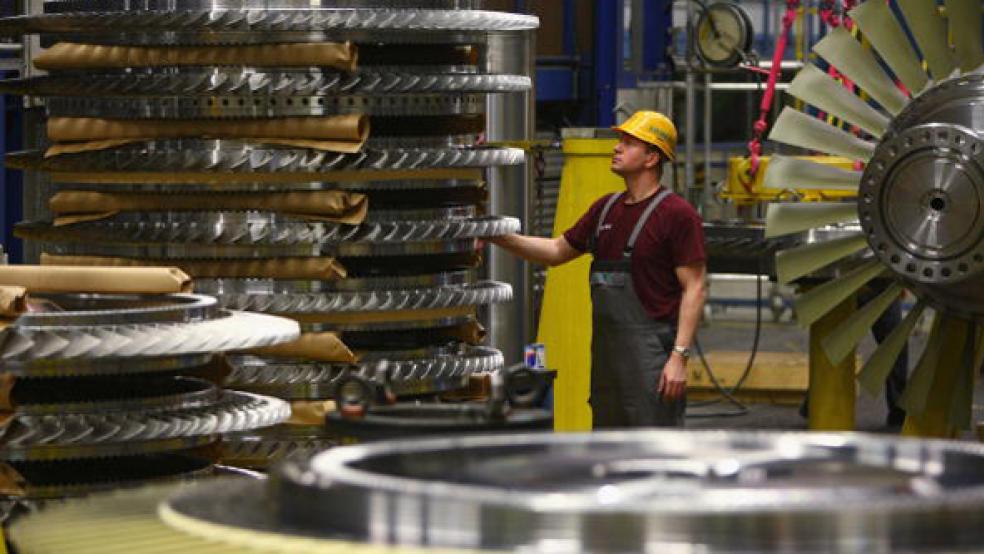Listening to the average American at a dinner party, a pundit on television or a lawmaker on Capitol Hill, it is easy see why so many believe that very little is being manufactured in the United States these days. The most visible products – iPhones, televisions, shoes, bicycles – are almost always made elsewhere.
Indeed, a study published this year by the Massachusetts Institute of Technology concluded that the loss of so much manufacturing capacity from the United States over the past decade has had a negative impact on the country’s ability to innovate – long considered to be the nation’s greatest economic and sociological strength. The United States no longer has the industrial “ecosystem” necessary to bring new ideas to the market, the study said.
Yet this impression doesn’t always comport with the truth, as I discovered in researching and touring plants throughout the country. Based on my findings, here are five myths about U.S. manufacturing – and the realities:
Myth #1: The U.S. is no longer a major manufacturing nation and lags far behind China.
Reality: Let’s get the facts out of the way.
- The U.S. was the second largest manufacturing nation in the world in 2012, generating $2.43 trillion annually compared to $2.9 trillion from China. This, of course, assumes that data published by the Chinese government is accurate and wasn’t embellished.
- Manufacturers in the United States are the most productive in the world, far surpassing the worker productivity of any other major manufacturing economy, leading to higher wages and living standards, according to National Association of Manufacturers.
- Some 54 percent of U.S. companies manufacturing overseas are considering returning production to the United States, according to BCG. A year ago the figure was 37 percent.
- U.S. manufacturing output is two and half times greater than it was 40 years ago, employing one-third fewer workers. The sector directly employs 9 percent of the private workforce and supports 17.2 million jobs.
Myth #2: U.S. manufacturers can’t compete with foreign-based companies to produce high quality consumer goods at a reasonable price.
Reality: Walk through the stores in any mall in the country and there can be little doubt that much of what is on display has been produced somewhere outside the U.S. But it is far from the case that U.S. made products -- including clothing, shoes, bicycles and other popular consumer goods – can’t compete with overseas companies with some of the cheapest labor forces in the world.
Case in point: The world’s finest work boots - and hiking and other leisure boots - continue to be made by Red Wing Shoes in tiny Red Wing, Minn.
Visit their plant as I did and you can see a map with all the companies’ distributors around the world. Notably, there are a great many red dots in China – where workers who can afford $400 work boots purchase them to protect their feet. Across the state line in Wisconsin, Allen Edmonds turns out top of the line men’s dress shoes. Also in Wisconsin is Trek Bicycles. They make their aluminum bikes overseas but fabricate their very 21st century carbon fiber models in Wisconsin and sell them worldwide at up to $12,000 a pop. The company is nearing $1 billion a year in revenue.
Myth #3: Foreign owned car companies with assembly facilities in non-union states have killed Detroit – Toyota makes more cars than any domestically headquartered company - union plants cannot make competitive products.
Reality: I visited the GM/Chevrolet pickup truck assembly plant in Flint Michigan the week they brought on their third shift. This plant is at full capacity – the most fascinating 3.5 million square feet of factory I visited while exploring factories in the U.S. This is a union plant with a two-tiered wage structure. Older workers can earn more than $50 per hour in wages and benefits, according to analysts, while the new workers start at roughly $17 an hour or so plus benefits and all are eligible for bonuses. New and old workers turn out pickups that J.D. Power ranks as some of the best on the market. Was the union man walking and driving me around the plant happy about the new wage structure? No. Was he happy his plant had turned out a Truck of the Year and production capacity was maxed out? You bet.
Myth #4: Even if manufacturing plants come back to the U.S., they will be loaded with robots and automation in order to compete.
Reality: Hal Sirkin of the Boston Consulting Group, sums it up best. “If ten manufacturing jobs left the US during the mass move to China, plants coming back here will employ seven workers due to changes in automation.” But workers there will be considerably more productive than ten years ago. A visit to Trek, to Red Wing, to Boeing, and to GM at Flint confirm this – and the best example may be the Airstream plant in Jackson Center Ohio. This factory turns out iconic RVs made essentially by hand using what CEO Bob Wheeler calls “tribal knowledge” – a collective set of skills that could not be duplicated by machines.
At Red Wing, I saw a century old machine being used more productively than a relatively new computerized one trying to perform the same task. The difference was the skill of the worker, not the newness of the machine.
According to Sirkin, "The U.S. manufacturing sector was more competitive than most people know and is very competitive right now – we believe by 2015, U.S. manufacturers, on average, will have a significant cost advantage over Japanese, German, French and other competitors, up to 15 percent lower overall production costs due to lower labor and energy costs. You can see evidence of this now."
Myth #5: America lacks the skilled workers to support a manufacturing renaissance.
Reality: Of all the myths, this is the most pernicious in that it derides the skills and capabilities of today’s and tomorrow’s factory workers. The issue is not the “specialized skills” people assume are required by workers in a factory, but a lack of adequate pay commensurate with the work and lack of awareness among job seekers about the potential rewards of factory jobs.
A segment last year on CBS News’ “60 Minutes” is emblematic of the public debate on this issue. The program focused on how hard it was to find skilled workers and how one worker went to community college to get the skills required for an entry level job. The pay? Twelve bucks an hour, which is what baristas in my neighborhood make serving me a latte.
The plant was producing components for a weapons system – in Senate Majority Leader Harry Reid’s home state of Nevada -- and in no way represented U.S. manufacturing in general. But it made good television.
600,000 manufacturing jobs have gone unfilled because of a lack of skilled workers according to Deloitte. The Boston Consulting Group puts the number at 80,000-100,000, a rounding error given a work force of more than 125 million in the U.S.
While there may be no lack of potential workers, there is a mismatch between those able to perform factory work and those seeking jobs in factories. Many who could work in a factory and earn far higher pay than working retail in the mall have no desire to work in manufacturing, And many willing to work in manufacturing are not capable of doing the work.
Tom Duesterberg of the Aspen Institute, framed the problem this way: “The core skills gap is real. . . . If there is one big issue being discussed right now among manufacturers and what they want from government and the educational establishment, it is efforts to produce more workers with skills. And that gap is in the three core capabilities of workers: literacy, numeracy and problem-solving.”
U.S. manufacturing is far from dead – but it faces many challenges in attracting and keeping well trained and highly motivated workers.
Michael Shulman is the author of “Made in America: Inside Stories of Success.”


